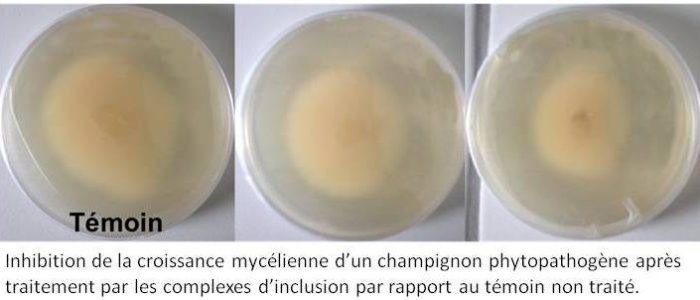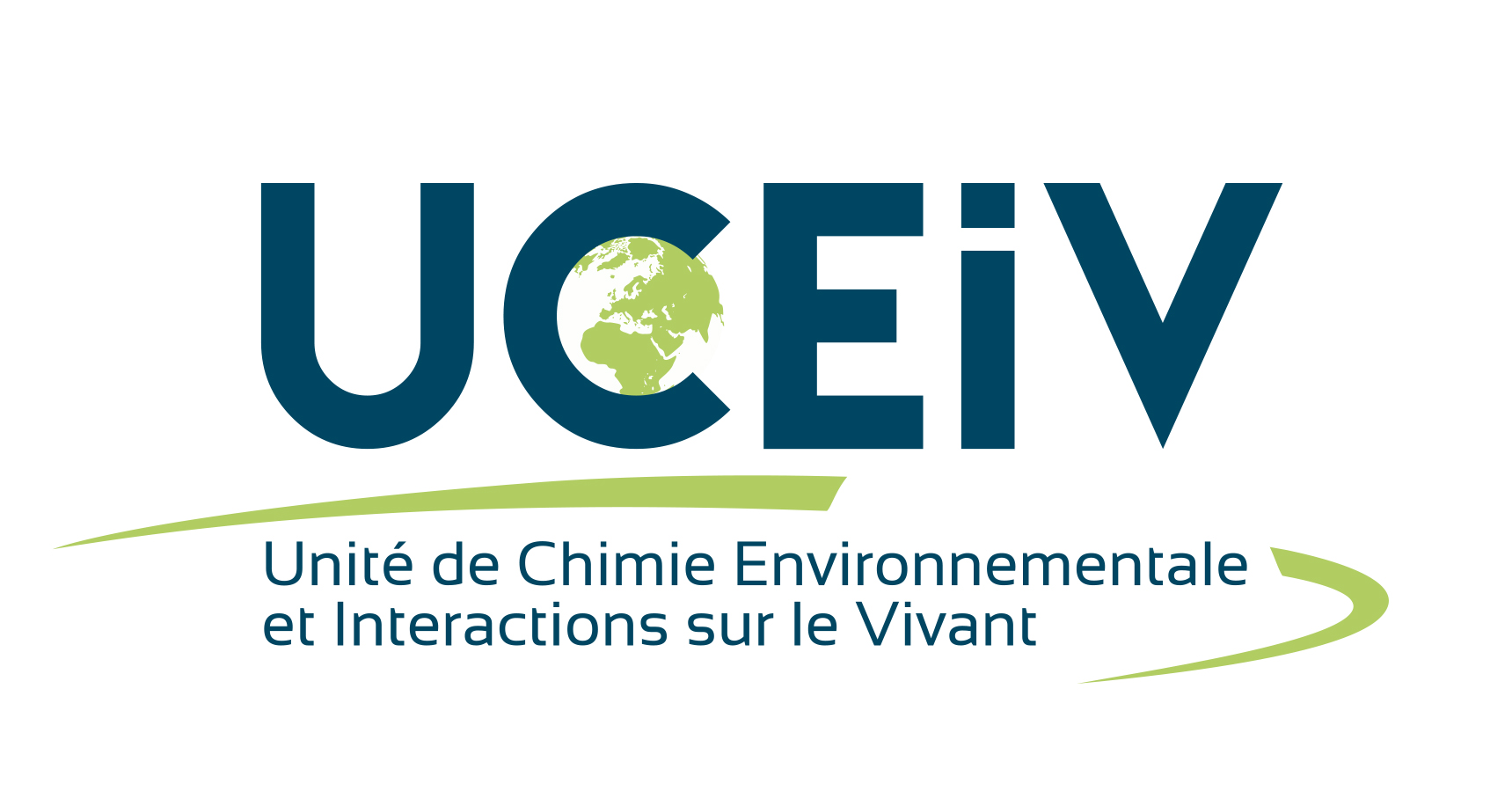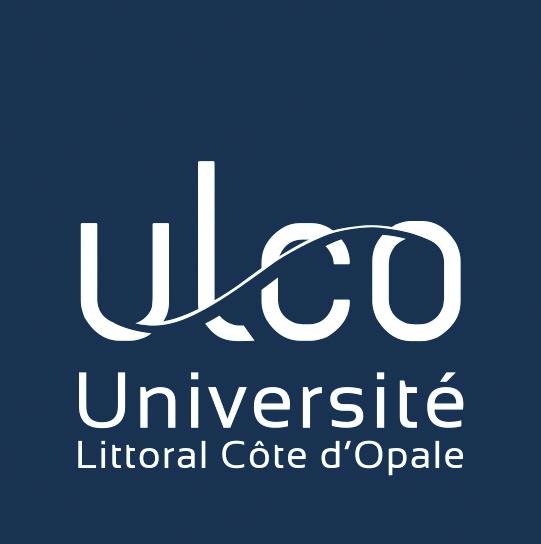The teams have initiated cross-functional projects on issues that meet the scientific objectives set out in the UCEIV theme:
- “Pollutant impacts on life”
- “Biological and chemical remediation”
- “Biomass recovery”
These actions reflect the interdisciplinary and innovative approaches that the Unit is capable of developing.
Evaluation of the degree of toxicity of by-products in incomplete removal of VOC catalytic process
This project brings together the “Catalytic Treatment and Clean Energy” and “Chemistry and Toxicology of Atmospheric Emissions” teams and aims to address the toxicity of compounds formed when VOCs are eliminated catalytically.
This transversal approach was implemented in order to validate the processes, not only based on the catalytic performances but also by identifying the reaction conditions to avoid in order not to emit by-products presenting a toxic risk. The current challenge is an unprecedented coupling allowing human lung cells to come into direct contact with the gases resulting from the test in order to fully validate our processes.
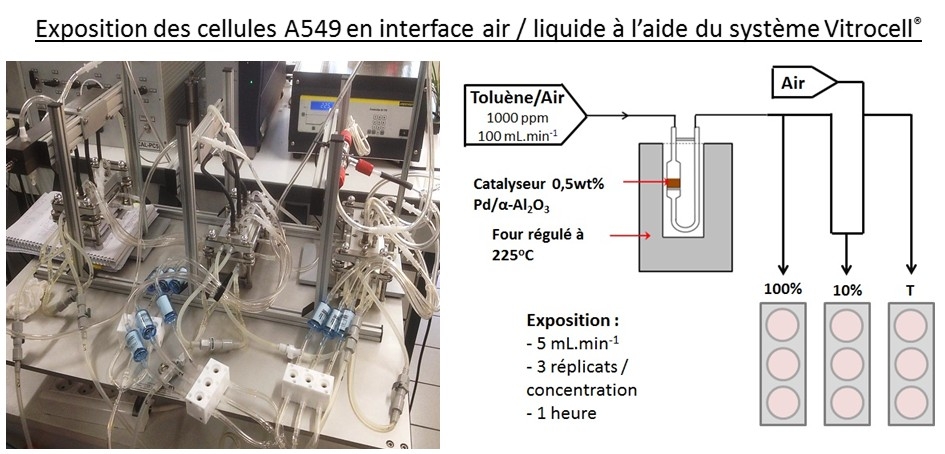
Degradation of organic pollutants in aqueous medium
The “Supramolecular Chemistry” and “Catalytic Treatment and Clean Energy” teams are developing research on water depollution by Fenton and photo-Fenton using heterogeneous catalysts. This involves preparing catalysts based on natural porous materials (clays, oil shales, algae, zeolites, etc.) or synthetic materials and testing their effectiveness in oxidation reactions of organic compounds (Fenton, photo-Fenton, catalytic oxidation). The use of highly structured porous inorganic materials has resulted in solids with good properties for both catalyst support and adsorption/absorption. In addition, the synthesis of hybrid materials comprising CDs interspersed in double-layered hydroxides (LDH/CD) has been carried out.

Study of the role of mycorrhizal inoculation in the phytostabilization of ETM in historically polluted soils
The “Plant-Fungus Interactions and Remediation” and “Chemistry and Toxicology of Atmospheric Emissions” teams have combined their skills in toxicology, ecotoxicology and phytoremediation by mycorrhizae to assess the health status of herbaceous and tree-plant species introduced into a polluted site. This study was part of the Phytener research program (2009-2014), funded by ADEME, carried out by the ISA group of LGCgE and involving several partners: PC2A (Lille 1), Laboratoire des Sciences Végétales et Fongiques (Université Lille 2), Laboratoire Chrono-Environnement (Université de Franche Comté), INRA, CCMCO and UCEIV, the Chambre Régionale d’Agriculture Nord – Pas de Calais. Its main objective is to develop a requalification technique by assisted phytostabilization of soils heavily contaminated with ETM (lead, cadmium, zinc, etc.) from past atmospheric emissions from two metallurgical plants based at Noyelles-Godault.
The IPCR and CTEA teams explored the role of mycorhization in the assisted phytostabilization of ETMs in the tolerance to toxicity of Miscanthus pollutants and certain tree species (alder, robinia), by evaluating oxidative stress markers (fatty acids, malondialdehyde, 8-OHdG, antioxidant enzymatic activities). The interest of phytostabilization assisted by mineral amendments (fly ash) on soil microbial viability was also studied using specific lipid markers.
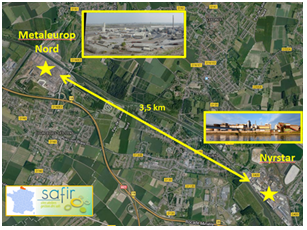
Study of the antifungal properties of free or complexed essential oil components
The “Supramolecular Chemistry” and “Plant-Fungus Interactions and Remediation” teams are developing a project on the search for new formulations that are non-toxic for humans and respectful of the environment in order to combat phytopathogenic fungi. This involves testing the ability of inclusion complexes between cyclodextrins and plant essential oil components to inhibit the development of different fungal species. The minimum inhibitory concentrations (IC50 and IC100) are determined by screening by the dilution method in agar. The use of inclusion complexes can be registered as an alternative solution based on natural, ecological and sustainable products for new agro-food practices replacing food preservatives and synthetic fungicides.
